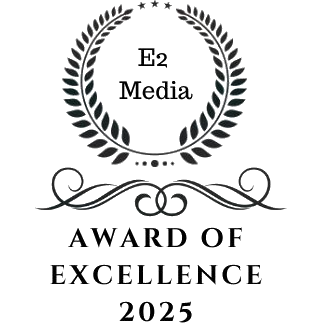
Few readers realise it, but content editing is one of the most important stages of the writing process. Often invisible, it can also create the most impact – it’s the deciding factor between a dry, uninspiring piece of writing and one that sparkles. Whether you’re writing a blog post, a novel or a corporate report, content editing can transform your writing. Content editing involves refining your work for clarity, coherence, and correctness, skills that are also valuable when using a dissertation writing service to ensure a polished final draft. UKWritings.com offers professional editing services that can enhance your content, making it an ideal resource for students aiming to perfect their dissertations.
What Is Content Editing?
Essentially, content editing means going over written text with a view to improving it for communication purposes. Content editing differs from proofreading, which is concerned only with those most obvious errors (such as spelling and grammar) that lie at the surface of a text. When all has been decided, then we police the surface of the text to weed out some errors, but content editing is concerned with errors at a deeper level: clarity, coherence, flow, tone, structure, etc, with a view to making the piece as effective as possible for its target audience.
Content editors can improve readability and impact by smoothing out rough patches in the writing, such as awkward phrasing, underdeveloped arguments, confused ideas, and so on. Their corrections might involve moving some sections around, expanding on underdeveloped points, or cutting some pieces out to make the writing more condensed and compelling.
The Importance of Content Editing
Content editing is essential for refining your writing, and to master it like a pro, you can learn about UKWritings to discover expert tips and services that enhance your editing skills. The right kind of good content editing can take your draft and turn it into the polished, professional piece of writing it needs to be, so your ideas resonate with readers with the most impact.
This is all the more important in the digital age, when attention spans are shorter than ever and with more people vying for readers’ attention, meaning that there’s less time to capture their interest and ensure that your content delivers on its promise of imparting information, persuading an audience or entertaining.
Furthermore, content editing will help you build your own writing skills. The art of taking a critical lens to your own content, and then bettering it, will allow you to become a better writer.
The Content Editing Process
Step 1: Take a Break
It’s important to separate yourself from the work before you edit. You need to step back from what you were doing and come back with fresh eyes. Editing will feel easier if you’ve waited a day or more, during which you might also have thought more about your writing. Even a few hours without thinking about your piece can make a difference.
Step 2: Read Through the Entire Piece
Read through the piece, without making any edits at all, to get a feel for the flow and shape of what you have penned. Are there any gaps or empty areas? Is it all in the right order? Does it sound like the kind of thing you hope it will?
Step 3: Analyse the Structure
Look at how you’ve organised your content. Is the introduction engaging and scene-setting? Have you made your main points in a logical manner? Does the conclusion finish things off in the right way? It doesn’t matter if you haven’t touched a word of your copy for a long while. It can be useful to stand back for a moment and rethink your writing. Don’t be afraid to rearrange sections and move things around in your essay in the quest for organisation.
Step 4: Check for Clarity and Coherence
Make sure everything you write communicates clearly, with a smooth progression of ideas from paragraph to paragraph, as well as section to section. Give each piece of text a coherent and compelling shape by smoothing out any bumps in your argument and explanation. Add phrases between paragraphs and sections to make the overall sequence more transparent and felicitous.
Step 5: Evaluate Tone and Style
Ask yourself: Does the tone and style of my text make sense for my target audience and purpose? Is it too academic or too informal? Do I use jargon my readers might not know? Adjust your writing to make sure that your target audience is not bored by your way of communicating. Better yet, paraphrase the content by switching difficult words to easier ones, splitting longer sentences, or joining shorter ones to create a better flow of the discussion.
Step 6: Trim the Fat
Scan for excess verbiage, whether words or sentences or even paragraphs. Anything that doesn’t complete your thought, bolster your argument, or forward your story. Kill these words. This minimises waffle and makes the writing taut and tough.
Step 7: Enhance Your Content
Meanwhile, prune what doesn’t belong while looking for ways to intensify your prose. That could mean adding examples, expanding on key points, or sprinkling in data or quotes that underscore your core arguments.
| Aspect | Questions to Ask |
| Structure | Is the content well-organised? Does it flow logically? |
| Clarity | Are all ideas expressed clearly? Is there any confusing language? |
| Coherence | Do all parts of the content connect well? Are there smooth transitions? |
| Tone | Is the tone appropriate for the audience and purpose? |
| Conciseness | Is there any unnecessary content that can be removed? |
| Completeness | Are all key points fully developed? Is additional information needed? |
Advanced Content Editing Techniques
For added oomph, practice incorporating the following techniques into your copyediting:
Use the “Reverse Outline” Method
Then take what you’ve written as a first draft and create an outline for it – not what you want to say, but what you actually have said. It could be a helpful way to become aware of places where your internal plan was not successful – places where your organisation is weak or where you wandered away from your main points.
Read Your Work Aloud
For this reason, try reading your work out loud: you’ll quickly become aware of awkward turns of phrase, run-on sentences, and other problems that you can easily miss when reading in silence. Reading aloud is also a good way of ensuring that your writing flows and has a pleasing rhythm.
Get Feedback from Others
It is not always easy to find flaws in our own writing, so you can use colleagues, friends or professional editors for a critical revision. Their eyes might see what your eyes glossed over.
Use Editing Tools Wisely
They’re not a replacement for human judgment – nothing can replicate a human reader and editor – but if your writing passes muster with Grammarly, or touches only a few red flags with Hemingway, you’re probably on the right track. Just remember, you will be the final judge.
Focus on Your Opening and Closing
Make sure to put extra thought into your introduction and conclusion. The opening should be arresting, clearly establishing the argument that follows, and the ending should leave the reader with a sense of unity and purpose.
Common Content Editing Mistakes to Avoid
And even the most seasoned editors are prone to such pitfalls. Here are some of the most common flubs to avoid:
Over-editing
You can, however, edit too much. At some point, you have to trust your writing and you have to stop changing things for the sake of changing something. Eventually, in-and-in editing robs it of voice, authenticity and freshness.
Ignoring the Big Picture
Don’t be seduced into spending so much time on editing individual sentences that you forget about the big picture, the arc that you want the piece to take.
Failing to Consider the Audience
Remember who you’re writing for, and edit accordingly, thinking about your audience and how they will respond to the writing. Writers who can adapt their writing to the needs and expectations of different audiences stand a better chance of success. What works for one audience won’t necessarily work for another.
Rushing the Process
There’s no way to get off through good editing – unless you’re slavishly retyping the original with only a few desultory tweaks along the way. Hurrying through the editing process, looking for shortcuts, is the surest way to miss opportunities for improvement and to let errors slip by.
Not Fact-Checking
At this stage, you might also decide to do a basic fact-check of anything you’ve included in your article that might require further information – any statistics, facts or quotes you’ve used. Content editing You’re now at the final step. It’s time to start doing a full edit on your work, but remember that it’s still a highly subjective process.
Developing Your Content Editing Skills
As with any skill, the more you practice editing, the better you’ll become. Here are some ways to help you learn how to edit content more effectively:
Read Widely
Read good writing, particularly by different authors: stylistically good writing can help you ‘see’ good writing, as you can look for structure and get an idea about what’s effective and what’s not.
Practice Regularly
Write and fine-tune not only your own work, but also the work of others: offer to give feedback on a writing project by a friend or coworker.
Take a Course
Consider opting for an editing class or a writing workshop in which you can receive feedback on your editing.
Stay Updated
Stay up to date with best practices and trends in writing and editing by reading industry blogs, taking webinars or joining professional organisations.
Conclusion
Through content editing, you can develop your skill as a writer and produce texts that are much more meaningful and persuasive than you may have initially thought possible. With an understanding of the nature of content editing and the step-by-step process and techniques that are involved, you can approach the task of content editing with a new sense of confidence and competence.
Remember, too, that you won’t become a good content editor overnight. It takes time to learn the craft. Be patient with yourself, but also open to feedback and learning along the way. If you approach content editing with care, and with an eye to detail, you too can create content that is edited to the level of professional publishers, with writing that is clear, engaging, audience-focused and goal-oriented.
To be able to edit your own papers is a great help; to be able to help others edit is a real service to our information-enriched and information-overloaded world. Enjoy the editing process. Acquire the tools. Experience, practise and polish your skills, and watch your writing improve before your eyes.
Interested In Working Together?
Introducing Delivered Social. We’re The Most-Rated Digital Agency In Surrey & Hampshire – We’ve Got To Be Doing Something Right.
Delivered Social is a digital marketing agency with one mission—to help businesses grow. We’re famous in Guildford and Portsmouth for our social clinics. We believe in free advice. We build lasting relationships because our team prides itself on being helpful, which our clients appreciate.
If you are looking for a new website or an agency to manage your social media presence, we can help.
If you need something slightly different, here's a super handy list of all our services, or you can always email us.


















